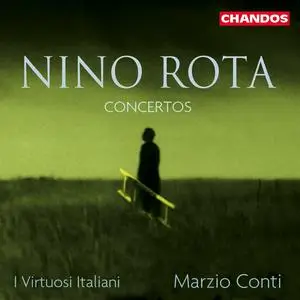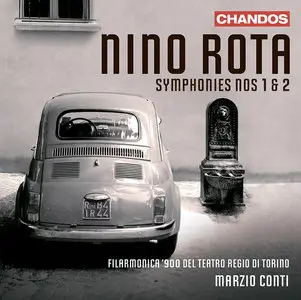Nino Rota - Symphonies Nos. 1 & 2 (2009)
Filarmonica ’900 del Teatro Regio di Torino, conducted by Marzio Conti
EAC | FLAC | Image (Cue&Log) ~ 278 Mb | Mp3 (CBR320) ~ 146 Mb | Scans included
Genre: Classical | Label: Chandos Records | # CHAN 10546 | Time: 01:02:10
The concert works of film composer Nino Rota, best known for his scores for the Godfather trilogy and for a long series of films by Federico Fellini, have increasingly often been finding space in classical recording catalogs. Here's a nicely recorded rendering of Rota's two numbered symphonies, virtually unknown until perhaps the turn of the century, issued on a major British label, Chandos. Both are attractive pieces that could be profitably programmed by any symphony orchestra. They were composed in the 1930s, when Rota was as much American as Italian; he won a scholarship to the Curtis Institute in Philadelphia and studied there for several years. Both reflect the French neo-classic trends that flourished in the U.S. between the wars, and, although Rota sounds nothing like Copland, you do experience in these works an evocation of what annotator Michele Rene Mannucci aptly calls "landscape in sound." Each work is in the conventional four movements, with a slow movement placed second in the Symphony No. 1 in G major and third in the Symphony No. 2 in F major.




